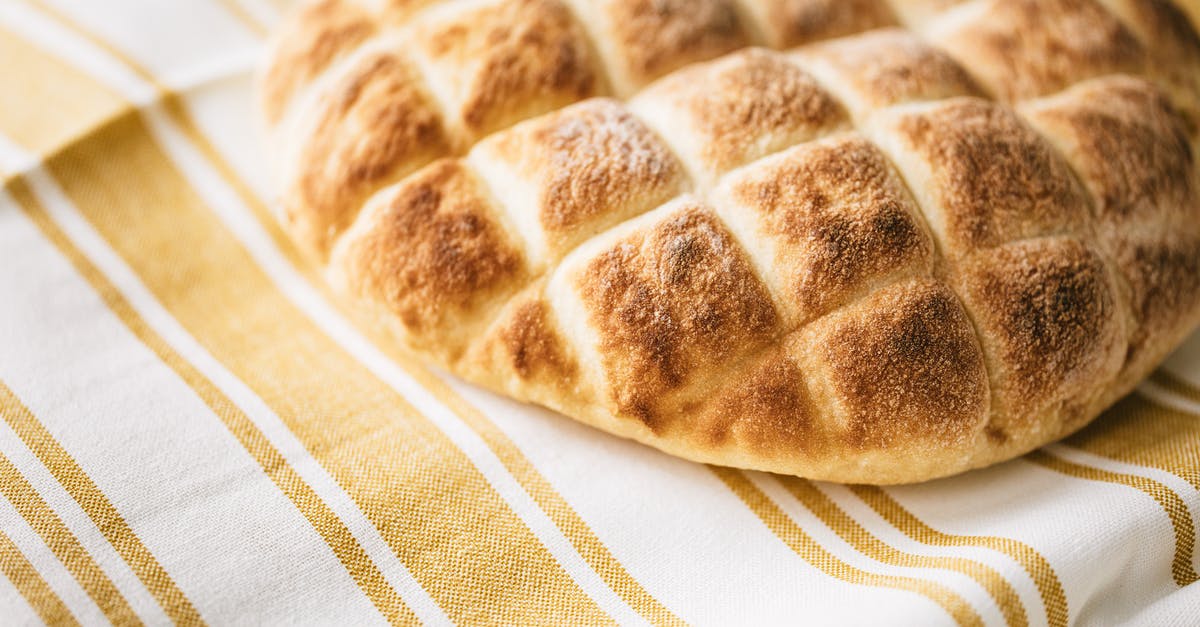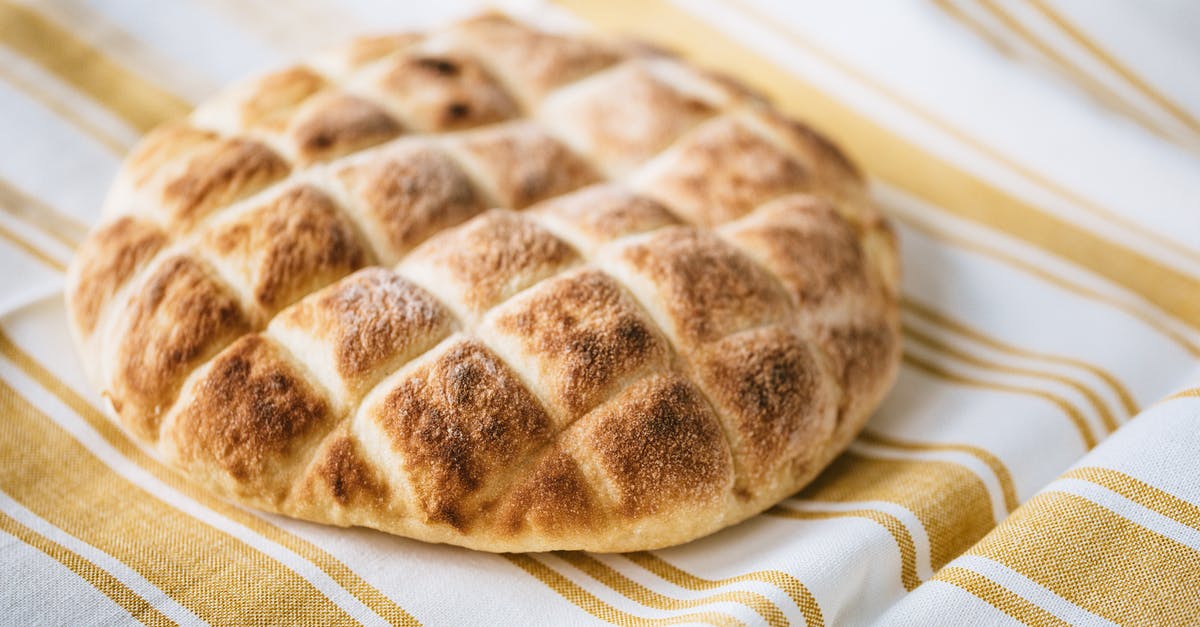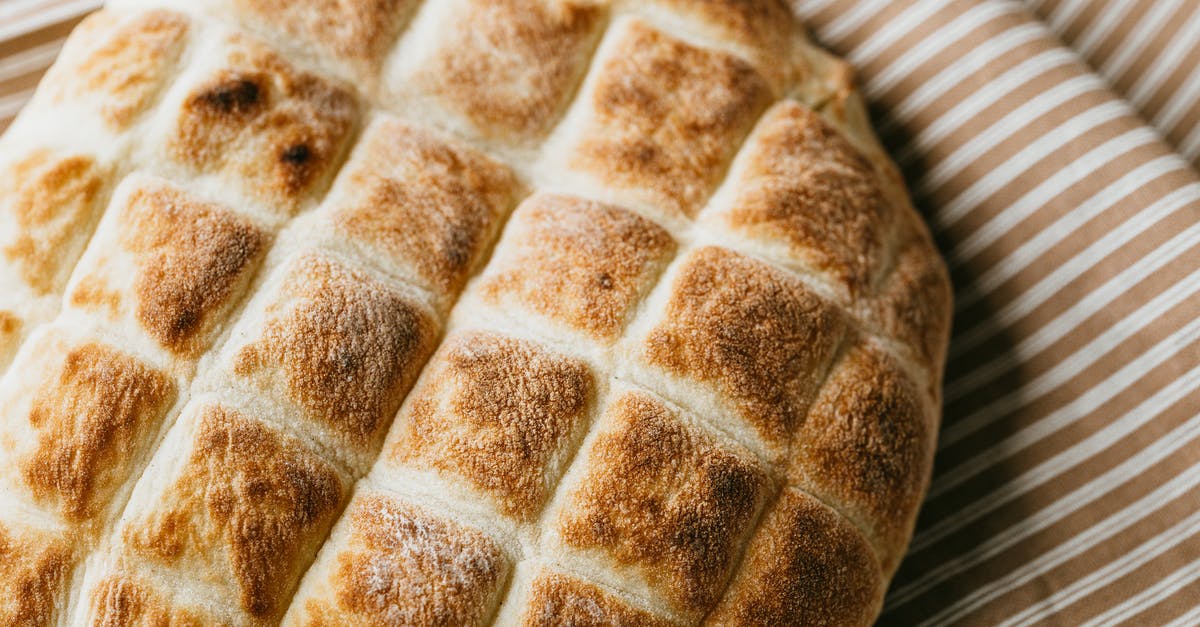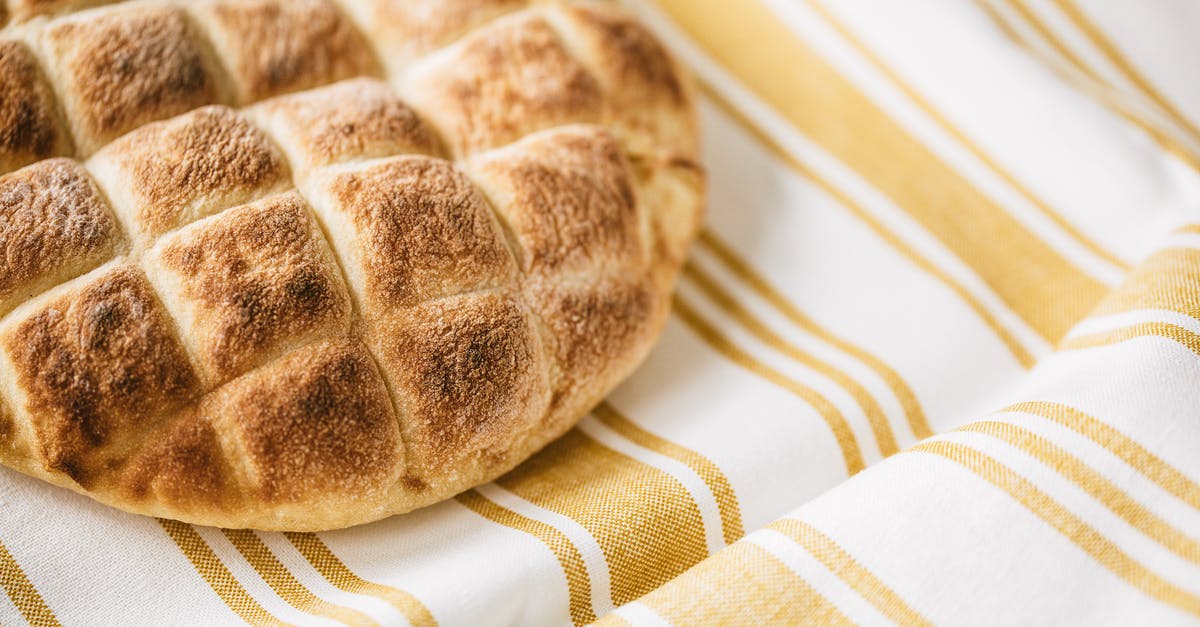How to keep a high hydration bread loaf from becoming flat

Yesterday, I made a sourdough loaf with a high hydration (80%) and as usual, when I turned it out of its banneton, it simply couldn't hold its shape and became very flat; only about 1 1/2 inches at the highest point.
The recipe follows: Sponge: 50g water 50g spelt flour 100g starter (100% hydration)
Sponge 344g water 230g whole meal spelt flour 230g strong white flour
- Mix together ingredients for sponge; ferment overnight in fridge.
- Mix water, flours and sponge together and knead until elastic.
- Rise until it becomes 1 1/2 its original size.
- Shape into a boule (for surface tension) and place in floured banneton.
- Rise until doubled; turn out and bake.
Although I made the recipe up there is nothing unusual about it and this happens with other high hydration loaves. I know it is a high hydration but others have formed lovely boules. How can I also achieve these high boules?
Best Answer
Hydration numbers aren't that meaningful by themselves -- whether an 80% hydration level can produce a high-rising free-form loaf will depend on a lot on the types of flours or grains that are used. (Usually, 80% hydration is most appropriate for flatter or roughly shaped breads: ciabatta, focaccia, pizza dough, rustic baguettes, etc.) With the specific mixture of spelt and "strong white flour" (high protein) you mention, it should be possible to get a loaf with a little more lift. But it's hard to say for certain -- the flour itself will affect whether it's actually possible to do what you want.
Frankly, there are a lot of variables that could be creating problems beyond the ingredients. A sourdough culture that produces a lot of acid quickly can make it quite difficult to get a tall loaf. Or, if your sourdough yeast is weak and takes more than a couple hours for each rise, you might be producing too much acid. The acidic environment will tend to weaken the gluten, and you'll inevitably get a loaf that spreads. If this is the problem, you'll need to refresh the starter with a few closely spaced builds that really dilute the starter (e.g., dilute your starter 1:4 or even more with new flour/water in each build). That will strengthen the yeast but cut down on the early development of acidity. Unless you're a sourdough expert, I might actually suggest trying to get good results with regular baker's yeast in your recipe before doing the sourdough conversion, since the sourdough may be contributing more than anything else to the spreading.
If the starter isn't the problem and the ingredients can hold up the loaf, the next options are alterations to technique. The best suggestion I can give is to introduce "stretch-and-fold" maneuvers into the first rise. After you mix the final dough (which doesn't necessarily need to be heavily kneaded), come back every 30-45 minutes or so and stretch the dough from each side at a time. Pull out, lift up, and fold on top of the rest of the dough. Do this from each of the four sides of the dough. Let rest for 30-45 minutes again and repeat as often as you need until you feel the dough strengthen significantly.
If you adopt stretch-and-folds, you may not see the same amount of rise you saw without them, so you need to just keep your eye on the clock and use the same amount of time you did before for the first rise. By the time you reach the shaping phase, the dough should be much more taught and elastic.
The other significant issue is shaping. Do you do a pre-shape and bench rest before the final shaping? That can also help. Preshape by pulling the dough taught, folding in upon itself a number of times, then let rest for 15 minutes or so before doing final shaping. Basically, the more times you stretch the gluten and let it rest, the stronger the dough will get -- whether you do that in folding during the first rise or in a preshaping before bench rest, it will help. The shaping technique itself can also significantly affect the stability of the final loaf (but that's hard to explain in a text response).
Also, you may be waiting too long in the final proof if you wait to fully double in size. Unless the sourdough culture is very strong, you might have better results by waiting for only a 1.5 or 1.75 rise. If you do that, you may want to be somewhat gentle during the final shaping to preserve some of the gas from the first proof.
In fact -- if all of this sounds way too fussy for you, another option may be to skip all the stretching, folding, shaping, etc. and avoid the final rise almost altogether. Let the dough roughly double in size during the first rise, then shape very gently into a rough ball, rest just a short time until it starts to expand again (no more than an hour or so), and then throw it in to bake.
Lastly, the baking method could change things. If you're baking on a flat stone, the dough can just spread significantly during baking itself. I've sometimes seen this with high hydration sourdough -- I load it on a peel, and it looks okay before it goes in the oven, but during the oven spring phase, it just becomes wider instead of taller. Baking in a pot or round pan could help to restrain that spreading a bit without making it look too much like bread from a pan. And, if you cover a pre-heated pot for the first 15 minutes or so of the bake, it will help the oven spring and crust development.
It's hard to know which of these options will work best for you, since there are a large number of issues that could be at fault in this case. In my experience, however, the two most likely causes for spreading are a weak sourdough starter or inadequate strengthening of the gluten during shaping.
Pictures about "How to keep a high hydration bread loaf from becoming flat"



Why is my bread loaf flat?
When yeast is active in your dough it eats away at starches and sugars and releases gasses. These gasses are then trapped inside your dough by the gluten mesh that has been created. If your gluten mesh is not fully developed it will not be able to supposer those gasses and thus resulting in a flat or collapsed bread.How do you keep bread from going flat?
To achieve this, a flour with high-quality gluten which is well kneaded is essential. Sometimes lowering the water in the recipe can prevent recurrences. Otherwise, adding a little vital gluten powder or changing to a high protein bread flour can fix the problem.How do you stop high hydration from sourdough spreading?
Your bread dough needs to be tightly shaped to achieve high rise. The more water and the more over proven your bread is, the more tightly you need to shape it to prevent it from spreading out. The best way to shape your bread is to gently deflated first (when you take it out of the proving bowl).What does higher hydration do to bread?
High hydration dough results in bread with a thin and crackly crust and a tender, evenly open crumb. When done right, the baked result is sublime: bread that's light and airy with a creamy texture and an impeccable mouthfeel. As a bonus the loaf stays moist and tastes fresh for days after it's baked!10 TIPS to BECOME A BOSS at HANDLING HIGH HYDRATION STICKY SOURDOUGH
More answers regarding how to keep a high hydration bread loaf from becoming flat
Answer 2
You are using whole spelt flour. Being whole it should absorb a lot of water, much more the strong white wheat flour (which already does absorb quite a lot due to having a lot of gluten).
Most of the loafs in the link you posted are white bread. You are using spelt, which is weaker than plain wheat (your recipe tries to compensate it with strong wheat). But mostly: you are using whole grain flour, which has grinded husks in it. Those hushks are heavy to lift. Also, they can do hit and cut the gluten (think of them as tiny knifes). Those two reasons make doughs rise less.
Also, keep in mind that many of those loafs are made with very very thick stones, wich will give them a lot of initial heat to rise.
Your recipe also says to wait until the loaf "doubles". I personally think that's not a good indicative to show when a dough is ready. Your loafes might be lightly (or almost) overfermented. Try to do the finger poke test instead, and put them in your oven stone when they still could have risen a bit outside.
Also, following the points given by @Athanasius in this answer, you'll be able to get enough experience to achieve those high loaves.
Answer 3
In addition to the above answers, adding an oxidizing agent, such as vitamin C can help whole grain loaves hold their shape better. You can usually find ascorbic acid powder (pure Vitamin C) at health food stores, or try replacing a few teaspoons of the final water in your recipe with a citrus juice. This will help to produce a taller loaf.
Sources: Stack Exchange - This article follows the attribution requirements of Stack Exchange and is licensed under CC BY-SA 3.0.
Images: Karolina Grabowska, Karolina Grabowska, Karolina Grabowska, Karolina Grabowska
